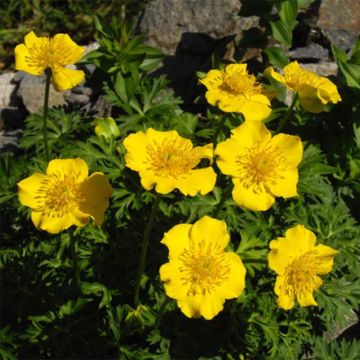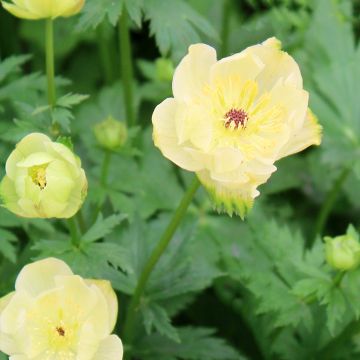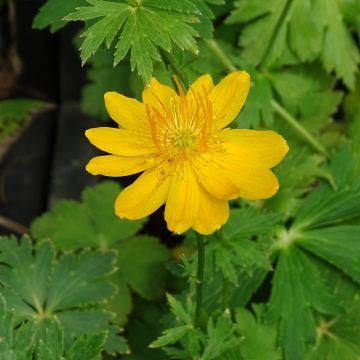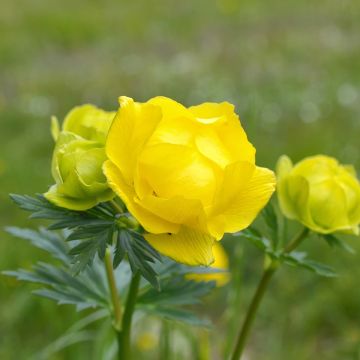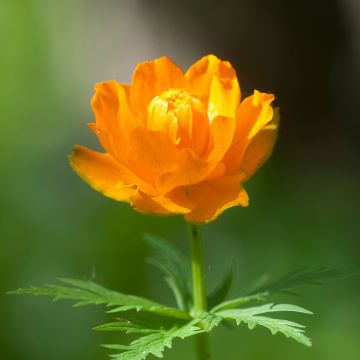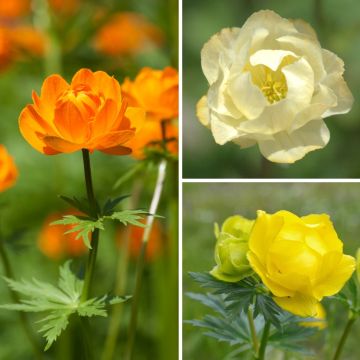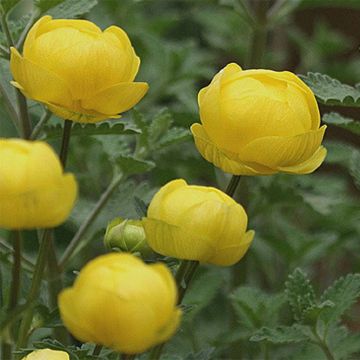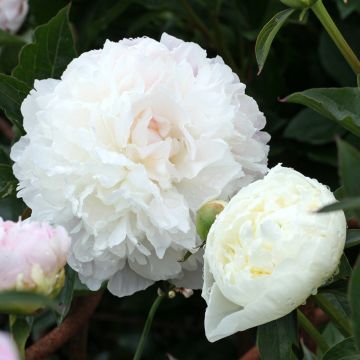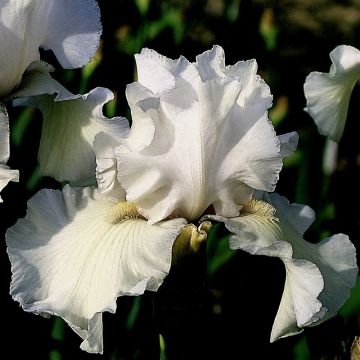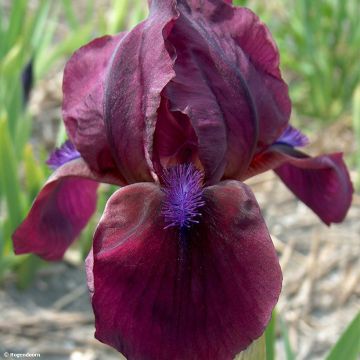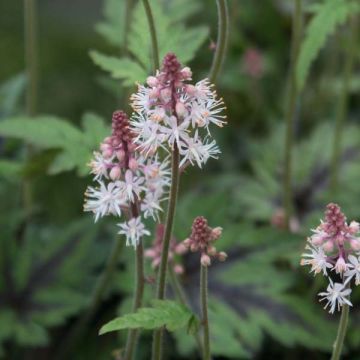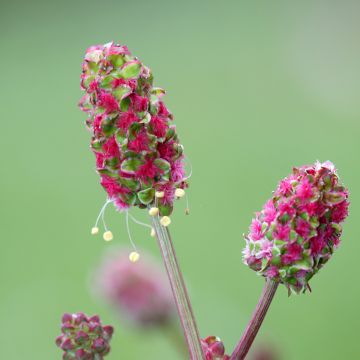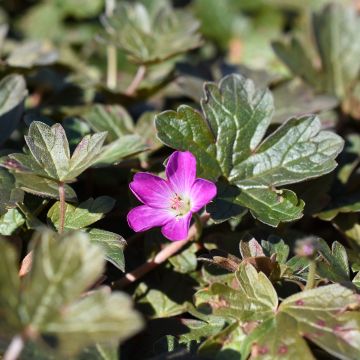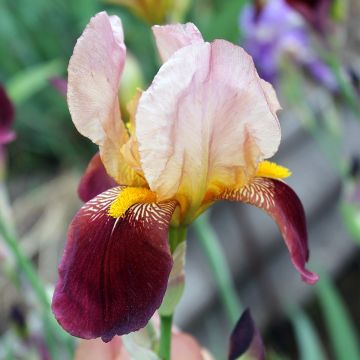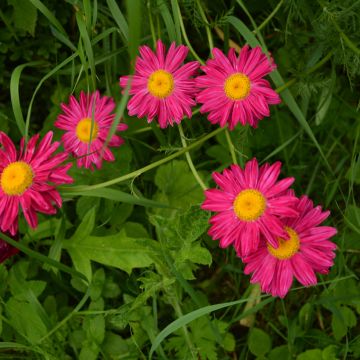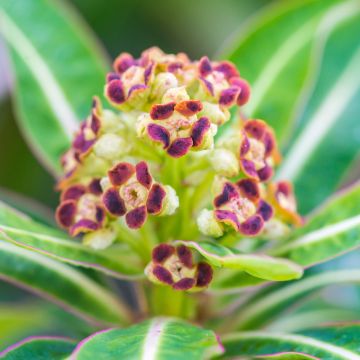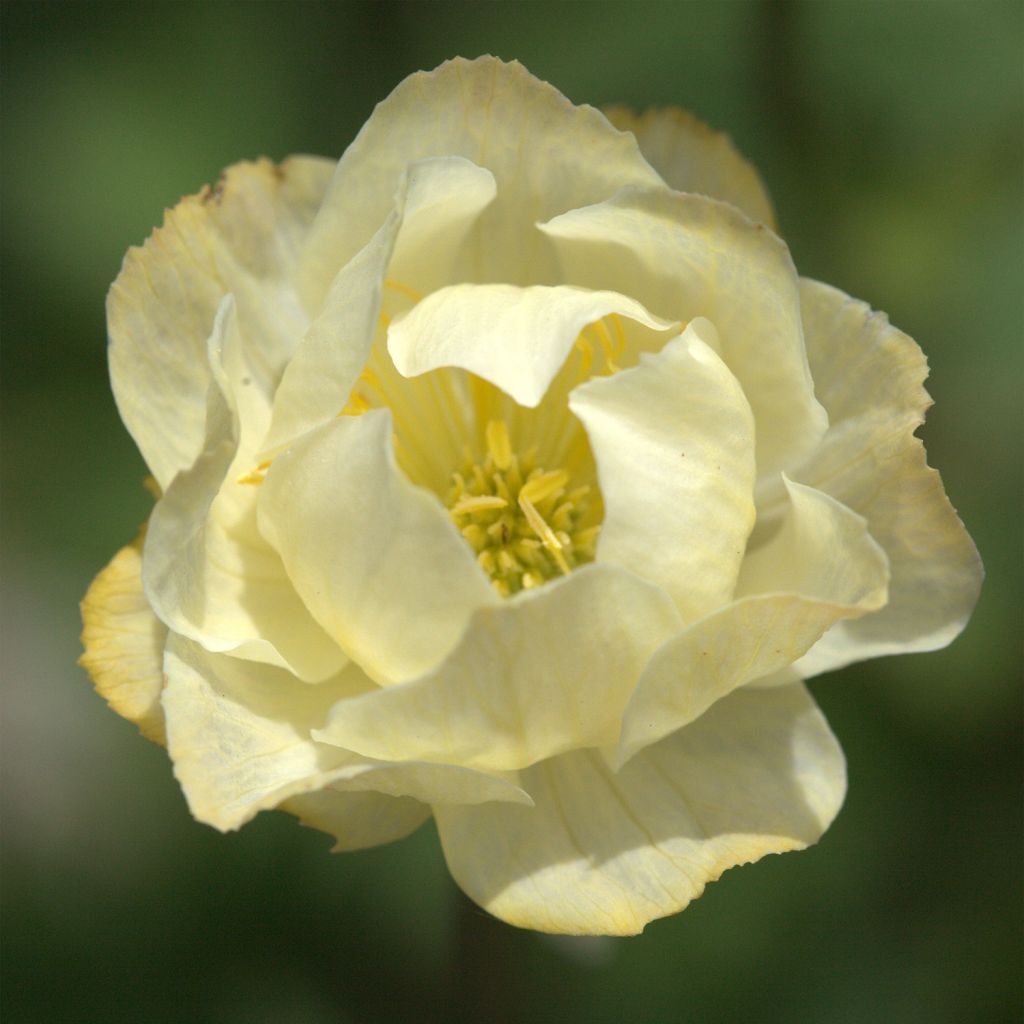

Trollius x cultorum Alabaster
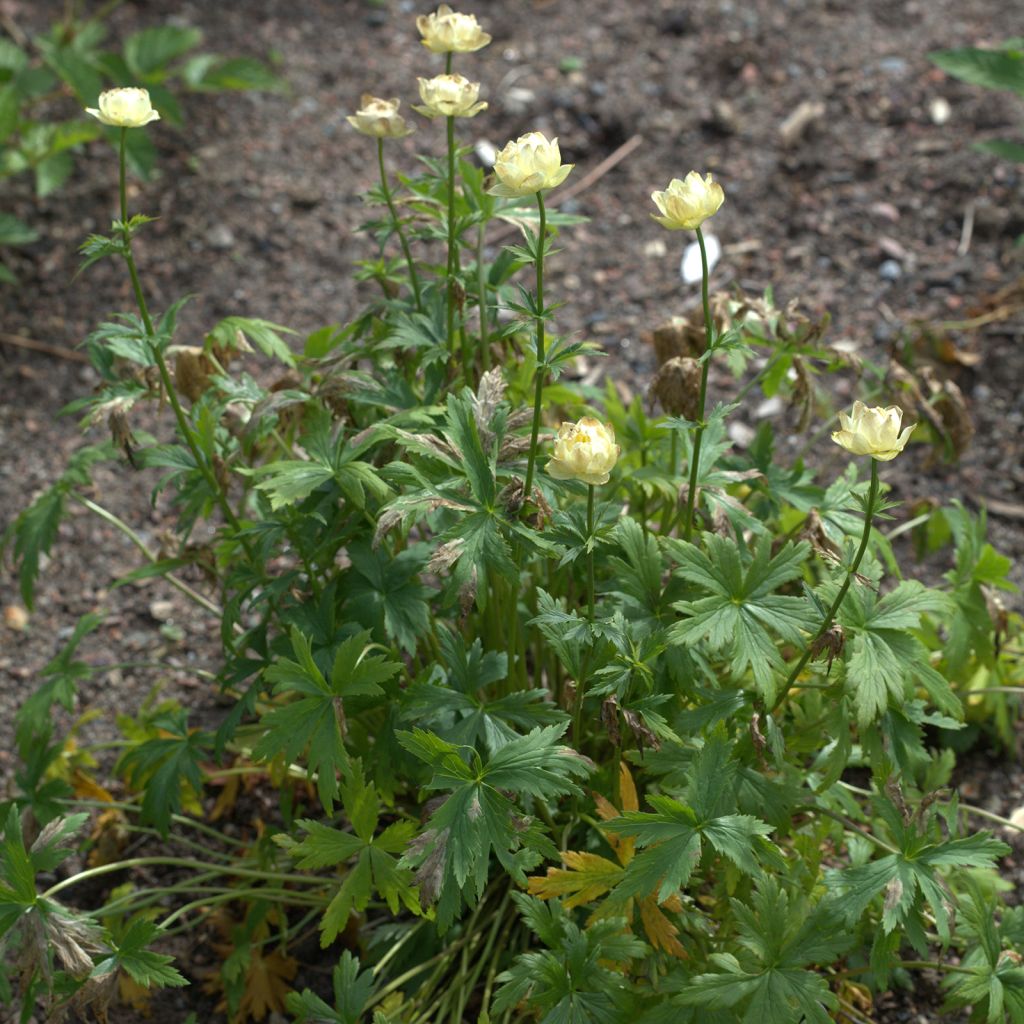

Trollius x cultorum Alabaster
Trollius x cultorum Alabaster
Trollius x cultorum Alabaster
Trolle hybride
This item cannot be shipped to the selected country
Delivery charge from €5.90
Delivery charge from €5.90
More information
Schedule delivery date,
and select date in basket
This plant carries a 12 months recovery warranty
More information
We guarantee the quality of our plants for a full growing cycle, and will replace at our expense any plant that fails to recover under normal climatic and planting conditions.
From €5.90 for pickup delivery and €6.90 for home delivery
Express home delivery from €8.90.
From €5.90 for pickup delivery and €6.90 for home delivery
Express home delivery from €8.90.

Does this plant fit my garden?
Set up your Plantfit profile →
Description
Trollius x cultorum Alabaster, also known as a hybrid globeflower, has generous and refined flowering. Its flowers, resembling large semi-double buttercups, range from creamy white to ivory and pale yellow. They are held on stiff stems above elegant, deeply incised foliage. It is also a perfectly hardy perennial, highly interesting for its rapid growth and ability to tolerate very wet to marshy soils. Highly adaptable, this variety also performs well in good, not too dry garden soil, much to the delight of flower enthusiasts.
Trollius x cultorum belongs to the family of Ranunculaceae. This genus comprises about 25 species native to temperate regions of the northern hemisphere (Himalayas, eastern Tibet, and China), where they thrive near water bodies without becoming invasive. 'Alabaster' is part of a group of hybrids resulting from cross-breeding between Trollius europaeus and T. chinensis.
This Alabaster variety, less vigorous than other hybrids, forms a clump of basal foliage from which leafy flower stems emerge, either single or branched, reaching a height of 60 cm (24in) and a diameter of 40 cm (16in) depending on growing conditions. It also serves as an accent plant due to the richness and intensity of its flowering, perfectly highlighted by spring green foliage. In May-June, its semi-double flowers with densely packed stamens, measuring 3 to 4 cm (1 to 2in) in diameter, appear. They display diaphanous petals that capture light well. Its deciduous foliage consists of highly incised, medium green, palmately lobed leaves.
Trollius Alabaster appreciates fertile, humus-rich soils, even muddy or marshy ones, and a sunny or slightly shaded exposure. It will therefore fit nicely in a well-watered garden, within a flowerbed, or on a riverbank, near a water feature, planted en masse or alongside plants that share similar growing conditions, such as Willowherbs, Vernonia, Astilbes, or even Physostegia virginiana.
We recommend combining this perennial with a collection of plants with remarkable foliage and white flowers to create a chic planting scheme. We suggest positioning Gunnera tinctoria as a backdrop, followed by Rodgersias and Itea virginica Little Henry with Arums and Irises. Their bases can be adorned with Trollius pumilus arranged in large clusters.
Report an error about the product description
Trollius x cultorum Alabaster in pictures
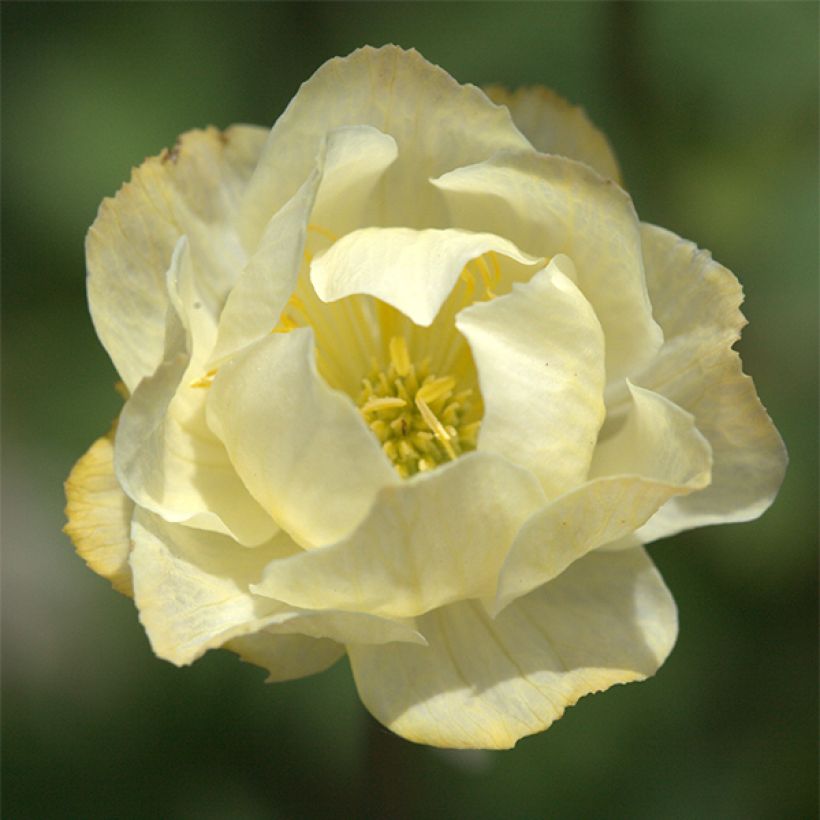

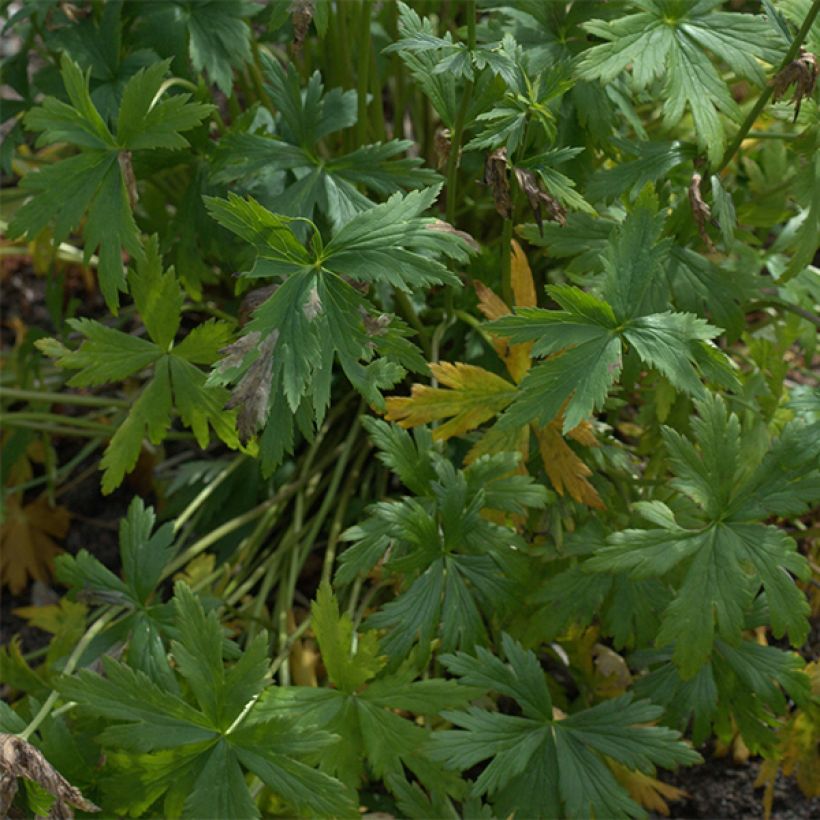

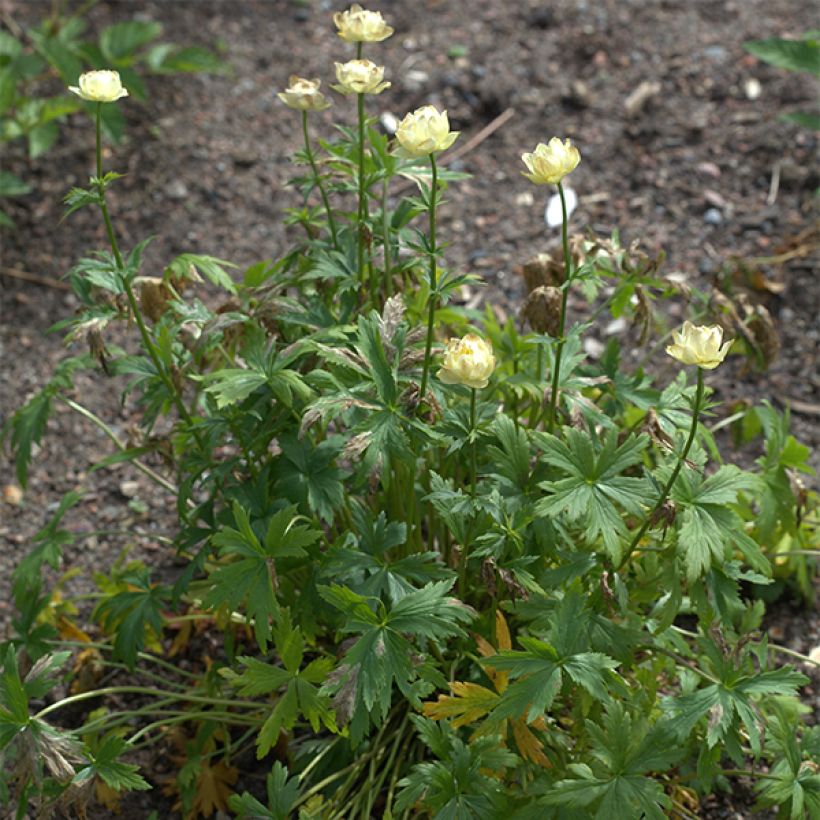

Flowering
Foliage
Plant habit
Botanical data
Trollius
x cultorum
Alabaster
Ranunculaceae
Trolle hybride
Cultivar or hybrid
Other Trollius
Planting and care
These globeflowers, like wild buttercups, love to have their feet in the mud and their heads in the sun. It is there, in the marshy area that separates water from land, that they thrive happily. However, they will also grow in any good garden soil that is not too dry, in the sun or in partial shade. Pruning the clumps after flowering sometimes promotes the re-emergence of flowers at the end of the season.
Planting period
Intended location
Care
-
, onOrder confirmed
Reply from on Promesse de fleurs
Spring flowering perennials
Haven't found what you were looking for?
Hardiness is the lowest winter temperature a plant can endure without suffering serious damage or even dying. However, hardiness is affected by location (a sheltered area, such as a patio), protection (winter cover) and soil type (hardiness is improved by well-drained soil).

Photo Sharing Terms & Conditions
In order to encourage gardeners to interact and share their experiences, Promesse de fleurs offers various media enabling content to be uploaded onto its Site - in particular via the ‘Photo sharing’ module.
The User agrees to refrain from:
- Posting any content that is illegal, prejudicial, insulting, racist, inciteful to hatred, revisionist, contrary to public decency, that infringes on privacy or on the privacy rights of third parties, in particular the publicity rights of persons and goods, intellectual property rights, or the right to privacy.
- Submitting content on behalf of a third party;
- Impersonate the identity of a third party and/or publish any personal information about a third party;
In general, the User undertakes to refrain from any unethical behaviour.
All Content (in particular text, comments, files, images, photos, videos, creative works, etc.), which may be subject to property or intellectual property rights, image or other private rights, shall remain the property of the User, subject to the limited rights granted by the terms of the licence granted by Promesse de fleurs as stated below. Users are at liberty to publish or not to publish such Content on the Site, notably via the ‘Photo Sharing’ facility, and accept that this Content shall be made public and freely accessible, notably on the Internet.
Users further acknowledge, undertake to have ,and guarantee that they hold all necessary rights and permissions to publish such material on the Site, in particular with regard to the legislation in force pertaining to any privacy, property, intellectual property, image, or contractual rights, or rights of any other nature. By publishing such Content on the Site, Users acknowledge accepting full liability as publishers of the Content within the meaning of the law, and grant Promesse de fleurs, free of charge, an inclusive, worldwide licence for the said Content for the entire duration of its publication, including all reproduction, representation, up/downloading, displaying, performing, transmission, and storage rights.
Users also grant permission for their name to be linked to the Content and accept that this link may not always be made available.
By engaging in posting material, Users consent to their Content becoming automatically accessible on the Internet, in particular on other sites and/or blogs and/or web pages of the Promesse de fleurs site, including in particular social pages and the Promesse de fleurs catalogue.
Users may secure the removal of entrusted content free of charge by issuing a simple request via our contact form.
The flowering period indicated on our website applies to countries and regions located in USDA zone 8 (France, the United Kingdom, Ireland, the Netherlands, etc.)
It will vary according to where you live:
- In zones 9 to 10 (Italy, Spain, Greece, etc.), flowering will occur about 2 to 4 weeks earlier.
- In zones 6 to 7 (Germany, Poland, Slovenia, and lower mountainous regions), flowering will be delayed by 2 to 3 weeks.
- In zone 5 (Central Europe, Scandinavia), blooming will be delayed by 3 to 5 weeks.
In temperate climates, pruning of spring-flowering shrubs (forsythia, spireas, etc.) should be done just after flowering.
Pruning of summer-flowering shrubs (Indian Lilac, Perovskia, etc.) can be done in winter or spring.
In cold regions as well as with frost-sensitive plants, avoid pruning too early when severe frosts may still occur.
The planting period indicated on our website applies to countries and regions located in USDA zone 8 (France, United Kingdom, Ireland, Netherlands).
It will vary according to where you live:
- In Mediterranean zones (Marseille, Madrid, Milan, etc.), autumn and winter are the best planting periods.
- In continental zones (Strasbourg, Munich, Vienna, etc.), delay planting by 2 to 3 weeks in spring and bring it forward by 2 to 4 weeks in autumn.
- In mountainous regions (the Alps, Pyrenees, Carpathians, etc.), it is best to plant in late spring (May-June) or late summer (August-September).
The harvesting period indicated on our website applies to countries and regions in USDA zone 8 (France, England, Ireland, the Netherlands).
In colder areas (Scandinavia, Poland, Austria...) fruit and vegetable harvests are likely to be delayed by 3-4 weeks.
In warmer areas (Italy, Spain, Greece, etc.), harvesting will probably take place earlier, depending on weather conditions.
The sowing periods indicated on our website apply to countries and regions within USDA Zone 8 (France, UK, Ireland, Netherlands).
In colder areas (Scandinavia, Poland, Austria...), delay any outdoor sowing by 3-4 weeks, or sow under glass.
In warmer climes (Italy, Spain, Greece, etc.), bring outdoor sowing forward by a few weeks.

































